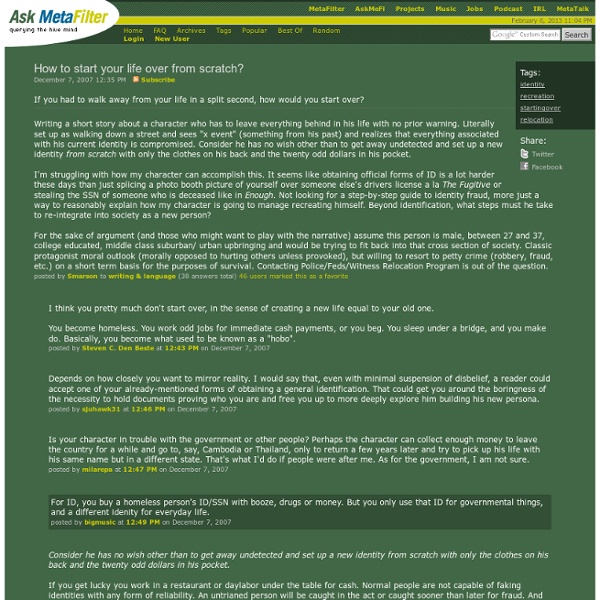How to start your life over from scratch?
If you had to walk away from your life in a split second, how would you start over? Writing a short story about a character who has to leave everything behind in his life with no prior warning. Literally set up as walking down a street and sees "x event" (something from his past) and realizes that everything associated with his current identity is compromised. I'm struggling with how my character can accomplish this. For the sake of argument (and those who might want to play with the narrative) assume this person is male, between 27 and 37, college educated, middle class suburban/ urban upbringing and would be trying to fit back into that cross section of society.
DIY: Gift Bags made from Newspaper | alicecorrine
Gift bags made from newspaper is a great idea for birthday parties or weddings! We saw this on a site that was we think was in Vietnamese?? Anywho -here’s our best try at translation along with the photo tutorial. Supplies: Glue, Scissors, Paper Doiles, Newspapers, and Wire Ribbon Step 1: Cut into rectangular sheet of paper and then press twice the leading newspapers in the Middle as shown on the picture Step 2: Use glue fixed two edge paper overlap Step 3: Fold one end securely to the bottom of the bag Step 4: You fold the side edge short and long edges paste twice in photos to form bottom bag Step 5: Wait for the glue to dry Step 6: Place treats inside the bag Step 7: Fold the remaining margin 2 cm down to form the mouth of bag Step 8: fold and glue small paper doile over the top of bag Step 9: Finally, punch holes to put Ribbon through. Voila – beautiful little gift bags! If you like this article go to the home page to see other similar posts. Like this: Like Loading...
Related:
Related:



